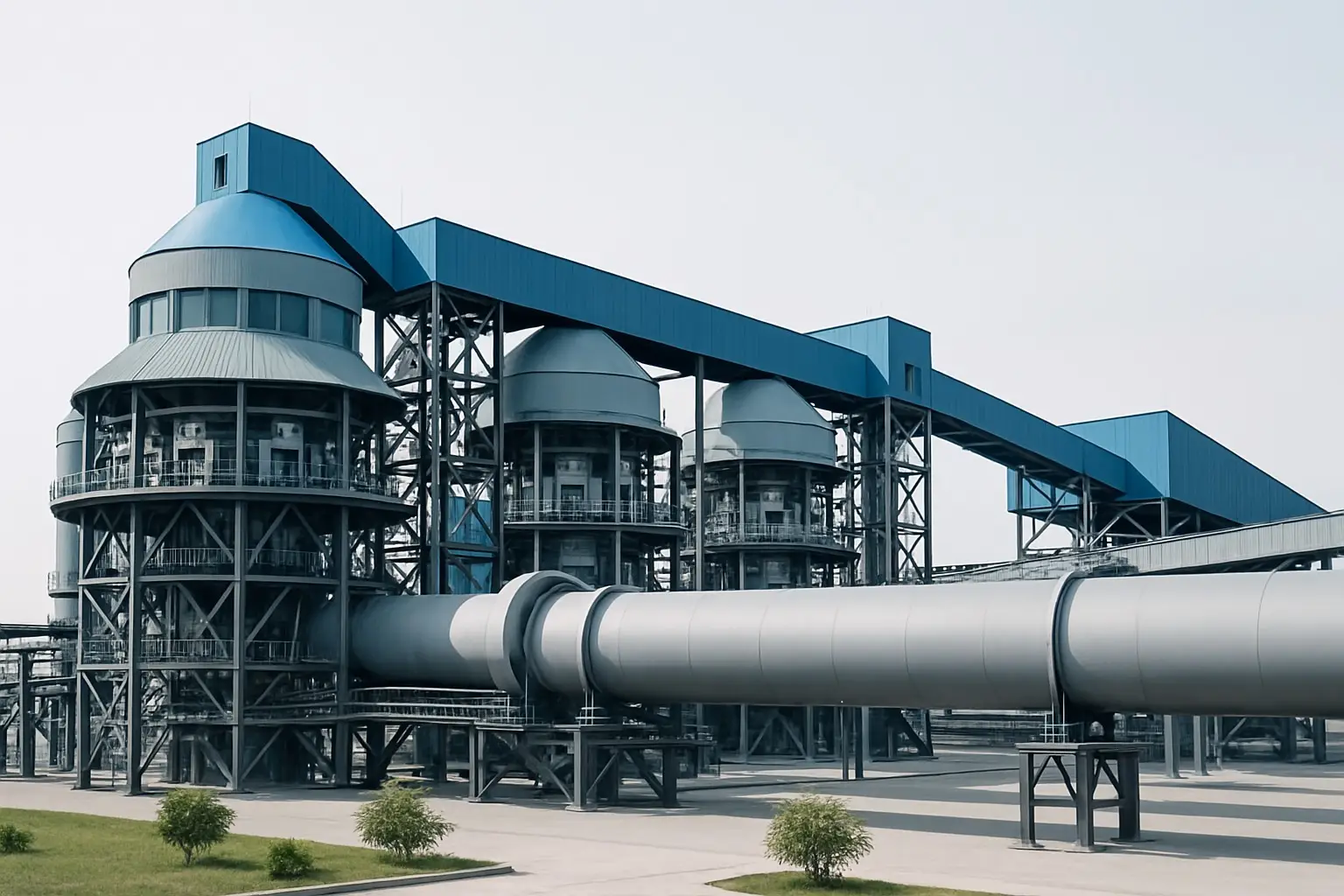Service
Lime Rotary Kiln
The lime rotary kiln, also known simply as the lime kiln, is specialized equipment designed for the calcination of limestone into quicklime. Renowned for its high production capacity, low noise levels, and energy efficiency, the lime rotary kiln is a key piece of machinery in lime processing plants. Its widespread industrial application makes it highly sought-after by users engaged in lime manufacturing and related industries.

Lime Rotary Kiln: Efficient and Advanced Equipment for Lime Calcination
Applications and Development
Developed by drawing on domestic and international experience, the lime rotary kiln is specially engineered to meet the unique requirements of active lime production. Its design accommodates the specific calcination characteristics of limestone, ensuring optimal performance and product quality.
Advantages of Lime Rotary Kilns by DMPCR
DMPCR’s lime rotary kilns are distinguished by a high utilization of raw materials, producing lime with uniform and consistent quality. The kilns boast large capacity and high turnover rates, coupled with straightforward operation and maintenance.
A standout feature is the adoption of a cutting-edge AC frequency conversion speed regulation system in the main drive unit. Compared to traditional electromagnetic or DC speed controls, this technology offers enhanced energy savings, precise speed adjustments over a wide range, and stable operation, aligning with modern environmental and efficiency standards.
Advanced manufacturing techniques further improve kiln reliability. After welding the supporting device bases, vibration aging treatment is applied to eliminate welding stresses. Using large vertical lathes and milling equipment ensures high machining precision and strict adherence to shape and tolerance requirements, enhancing overall installation accuracy.
To address common operational challenges, AGICO has optimized the kiln head and tail sections to prevent material backflow and dust leakage, facilitating smooth material transport and reducing environmental impact.
The uniform heating of limestone within the kiln leads to stable lime quality and a low rate of over-burning. This feature is especially beneficial for producing high-activity lime used in steelmaking. The kiln also supports flexible process configurations, such as integrating vertical preheaters to recycle high-temperature flue gases for preheating limestone, thereby improving product activity and ease of transportation and storage.
Working Principle of Lime Rotary Kiln
Limestone is fed into the kiln through a chute at one end. The kiln’s gradual incline and slow rotation cause the limestone to roll along the inner circumference, progressively moving from the feeding end to the kiln discharge end. Fuel, such as pulverized coal or natural gas, is injected through burners, combusting to generate the heat necessary for calcination.
Heat transfer occurs via radiation, convection, and conduction, converting limestone into quicklime as it advances through the kiln. Upon completion of calcination, lime is discharged, while high-temperature flue gases exit the kiln and enter a dust collection system ensuring environmental compliance.
Types of Lime Kilns
Lime kilns can be categorized based on fuel type and structural design. Fuel classifications include mixed kilns that burn solid fuels like coke and coal, and gas kilns utilizing blast furnace gas, coke oven gas, natural gas, or other gaseous fuels.
Structurally, lime kilns vary from vertical kilns and rotary kilns to specialized designs such as sleeve kilns, Sidvemaster kilns, Merz kilns from Switzerland, and Foucaz kilns from Italy. Additionally, operation modes differ with positive or negative pressure kilns employed depending on process requirements.
Design Considerations for Lime Rotary Kilns
Effective lime rotary kiln design balances safety, operational efficiency, and process requirements. Key design parameters include:
- Comprehensive consideration of production needs, raw materials, fuel characteristics, and auxiliary equipment like preheaters, precalciners, and coolers.
- Recommended length-to-diameter (L/D) ratios between 11 and 16 for preheater and precalciner kilns.
- Appropriate kiln slopes ranging from 3.5 to 4 percent to promote material movement.
- Rotation speeds tailored to kiln type; pre-decomposition kilns typically operate between 3.0 and 3.5 revolutions per minute, while preheater kilns run between 2.0 and 2.5 rpm, maintaining a speed ratio of approximately 1:10.
- Forced air cooling in the burning zone to protect kiln integrity.
- Temperature monitoring systems in the firing zone to ensure process control.
- Use of infinitely variable speed drives on the main motor and provision of auxiliary drives with backup power, enhancing operational reliability and flexibility.
